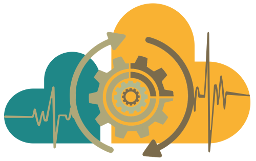Workflows
What is a Workflow?Filters
RiboSnake: 16S rRNA analysis workflow with QIIME2 and Snakemake
Qiime2 workflow for 16S analysis created with snakemake.
Authors
- Ann-Kathrin Dörr (@AKBrueggemann)
Usage
If you use this workflow in a paper, don't forget to give credits to the authors ...
Name: Random Forest Contact Person: [email protected] Access Level: public License Agreement: Apache2 Platform: COMPSs Machine: MareNostrum4 This is an example of Random Forest algorithm from dislib. To show the usage, the code generates a synthetical input matrix. The results are printed by screen. This application used dislib-0.9.0
Name: GridSearchCV Contact Person: [email protected] Access Level: public License Agreement: Apache2 Platform: COMPSs Machine: MareNostrum5
GridSearch of kNN algorithm for the iris.csv dataset (https://gist.githubusercontent.com/netj/8836201/raw/6f9306ad21398ea43cba4f7d537619d0e07d5ae3/iris.csv). This application used dislib-0.9.0
Name: GridSearchCV Contact Person: [email protected] Access Level: public License Agreement: Apache2 Platform: COMPSs Machine: MareNostrum5
GridSearch of kNN algorithm for the iris.csv dataset (https://gist.githubusercontent.com/netj/8836201/raw/6f9306ad21398ea43cba4f7d537619d0e07d5ae3/iris.csv). This application used dislib-0.9.0
This workflow
- Reconstruct phylogeny (insert fragments in a reference)
- Alpha rarefaction analysis
- Taxonomic analysis
Type: Galaxy
Creators: Debjyoti Ghosh, Helmholtz-Zentrum für Umweltforschung - UFZ
Submitter: WorkflowHub Bot
This workflow takes a cell-type-annotated AnnData object (processed with SnapATAC2) and performs peak calling with MACS3 on the cell types. Next, a cell-by-peak matrix is constructed and differential accessibility tests are performed for comparison of either two cell types or one cell type with a background of all other cells. Lastly, differentially accessible marker regions for each cell type are identified.
This Workflow takes a dataset collection of single-cell ATAC-seq fragments and performs:
- preprocessing
- filtering
- concatenation
- dimension reduction
- batch correction (with Harmony and optionally Scanorama and MNC-correct)
- leiden clustering
- new SnapATAC2 version: from 2.5.3 to 2.6.4
Workflow for Single-cell ATAC-seq standard processing with SnapATAC2. This workflow takes a fragment file as input and performs the standard steps of scATAC-seq analysis: filtering, dimension reduction, embedding and visualization of marker genes with SnapATAC2. Finally, the clusters are manually annotated with the help of marker genes. In an alternative step, the fragment file can also be generated from a BAM file.
- newer Version: Updated SnapATAC2 version from 2.5.3 to 2.6.4
Name: Matrix Multiplication Contact Person: [email protected] Access Level: public License Agreement: Apache2 Platform: COMPSs
Description
Matrix multiplication is a binary operation that takes a pair of matrices and produces another matrix.
If A is an n×m matrix and B is an m×p matrix, the result AB of their multiplication is an n×p matrix defined only if the number of columns m in A is equal to the number of rows m in B. When multiplying A and B, the elements of the ...
Name: Matrix Multiplication Contact Person: [email protected] Access Level: public License Agreement: Apache2 Platform: COMPSs
Description
Matrix multiplication is a binary operation that takes a pair of matrices and produces another matrix.
If A is an n×m matrix and B is an m×p matrix, the result AB of their multiplication is an n×p matrix defined only if the number of columns m in A is equal to the number of rows m in B. When multiplying A and B, the elements of the ...

 Tests
Tests